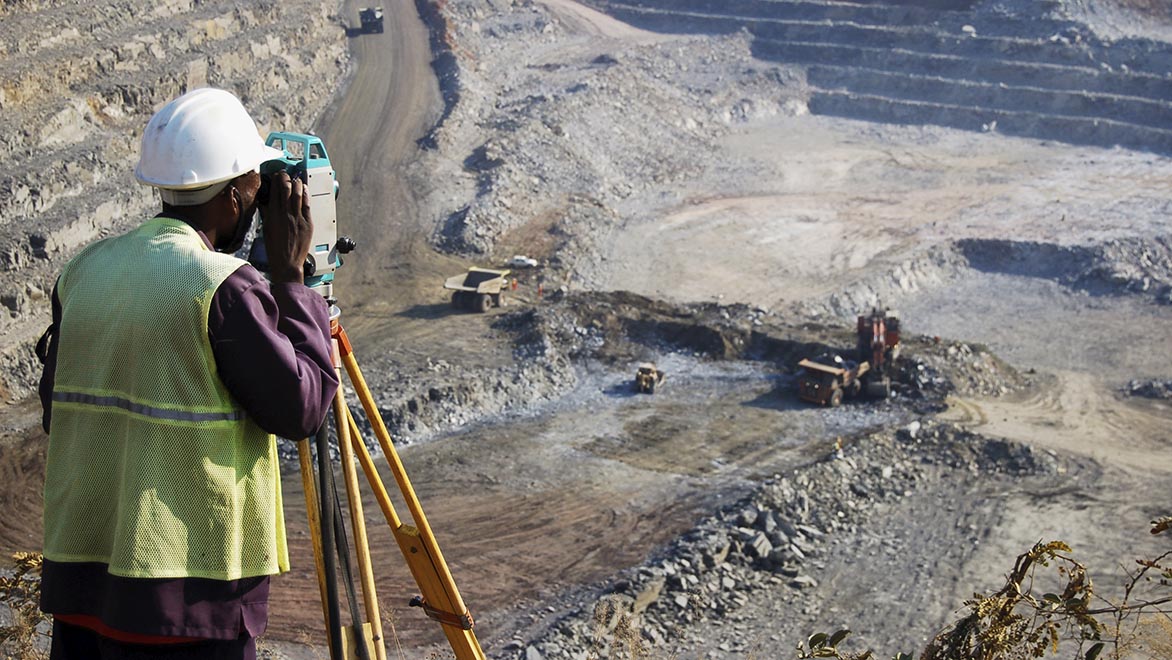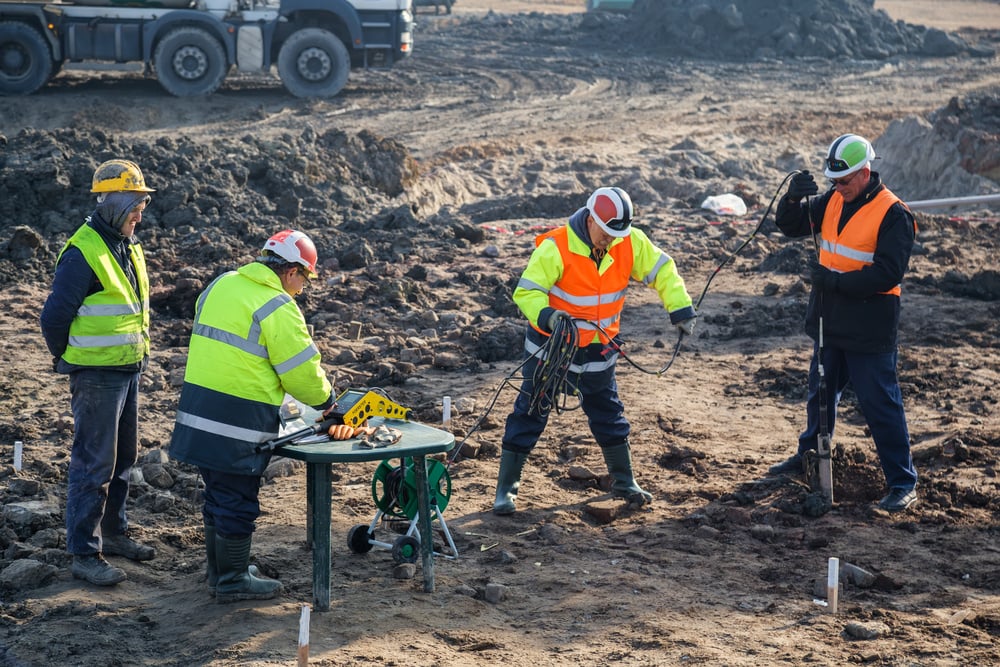Geotechnical Engineering For Construction Projects Things To Know Before You Get This
Geotechnical Engineering For Construction Projects Things To Know Before You Get This
Blog Article
The Buzz on Geotechnical Engineering For Construction Projects
Table of ContentsGeotechnical Engineering For Construction Projects for DummiesThe Greatest Guide To Geotechnical Engineering For Construction ProjectsMore About Geotechnical Engineering For Construction ProjectsLittle Known Questions About Geotechnical Engineering For Construction Projects.The smart Trick of Geotechnical Engineering For Construction Projects That Nobody is DiscussingThe 10-Second Trick For Geotechnical Engineering For Construction ProjectsThe 8-Minute Rule for Geotechnical Engineering For Construction Projects
and Kovacs, W. (1981 ), An Introduction to Geotechnical Engineering, Prentice-Hall, Inc. Deep Scan Technology (2023 ): Deep Check Technology uncovers hidden structures at the website of Denmark's tallest structure. "Geofrost Coring". GEOFROST. Fetched 20 November 2020. Han, Jie (2015 ). Concepts and Practice of Ground Improvement. Wiley. ISBN 9781118421307. RAJU, V. R.Ground Improvement Technologies and Case Histories. Singapore: Research Posting Services. p. 809. ISBN978-981-08-3124-0. Ground Renovation Concepts And Applications In Asia. Pariseau, William G. (2011 ). Design analysis in rock technicians. CRC Press. Hegde, A.M. and Palsule P (Geotechnical Engineering for Construction Projects).S. (2020 ), Efficiency of Geosynthetics Reinforced Subgrade Subjected to Repeated Automobile Loads: Experimental and Numerical Research Studies.
Cengage Knowing, Stamford, 666 p. Atkinson, J., 2007. The technicians of dirts and foundations. Taylor & Francis, N.Y., 442 p. Floating Offshore Wind Turbines: Feedbacks in a Sea state Pareto Optimum Layouts and Economic Assessment, P. Sclavounos et al., October 2007. Nicholson, D, Tse, C and Penny, C. (1999 ). The Observational Approach in ground design principles and applications.
Everything about Geotechnical Engineering For Construction Projects
Lab and area testing plays a critical function in this procedure. By extracting samples from the planet's subsurface and using a suite of examinations, geotechnical designers can predict the behavior of dirt layers and evaluate their viability for numerous building efforts. The significance of geotechnical design in civil engineering can not be overstated, attributable to a number of elements: The preliminary step in any geotechnical research study involves establishing the dirt type at the building site.
Understanding these qualities ensures that just appropriate soil types are selected for the advancement, consequently avoiding prospective architectural failings. The structure acts as the bedrock of any building job. Choosing the proper structure kind is a decision that depends upon the thorough analysis given by geotechnical design. This guarantees the long life and security of frameworks by accommodating the tons they will bear.

Geotechnical site examination is a critical step in the planning and execution of any kind of building and construction task. It includes the collection and analysis of information associated with the physical residential or commercial properties of soil and rock under a recommended building website. This info is important for the layout and building and construction of risk-free, stable, and lasting frameworks.
The 10-Minute Rule for Geotechnical Engineering For Construction Projects
In this blog site, we will explore the value of geotechnical website investigation, its various elements, and just how it benefits building tasks. Geotechnical site investigation, likewise referred to as subsurface exploration, includes a collection of tasks targeted at determining the dirt, rock, and groundwater problems at a construction website. The key purposes are to identify prospective geotechnical threats, assess the engineering properties of subsurface materials, and offer suggestions for the layout and construction of foundations, maintaining walls, and other structures.
This might consist of geological maps, airborne pictures, previous investigation reports, and historic data. The workdesk study aids in determining possible geotechnical issues and preparing the subsequent fieldwork. Adhering to the workdesk research study, a site reconnaissance is performed to aesthetically examine the site and its environments. This includes observing the topography, drainage patterns, existing frameworks, plants, and any type of indications of instability or erosion.
The Of Geotechnical Engineering For Construction Projects
Superficial examination pits are excavated to straight observe and example the soil and rock. This approach is useful for examining the top layers of the subsurface and determining near-surface dangers. Non-invasive geophysical techniques, such as seismic refraction, ground-penetrating radar (GPR), and electric resistivity tomography (ERT), are made use of to map subsurface conditions and detect abnormalities.
Dirt and rock examples accumulated throughout the field investigation undergo lab testing to establish their physical and mechanical properties. Common lab examinations consist of grain dimension evaluation, Atterberg restrictions, compaction examinations, triaxial shear examinations, and debt consolidation examinations. These examinations provide vital data for geotechnical evaluation and design. The data collected from the desk study, site reconnaissance, area investigation, and lab testing are assessed and translated to establish an extensive understanding of the subsurface conditions.
The primary advantage of geotechnical site investigation is ensuring the safety and security and security of structures. By understanding the subsurface conditions, engineers can develop foundations and other structural elements that can hold up against the lots and environmental forces they will be subjected to. This decreases the danger of negotiation, subsidence, and architectural failing.
Geotechnical Engineering For Construction Projects Things To Know Before You Get This
This guarantees effective and secure construction methods. Geotechnical site investigations are often called for by constructing codes and regulations.
This details is important for job supervisors, designers, and service providers in creating reasonable schedules, budget plans, and contingency strategies. Geotechnical Engineering for Construction Projects. High-Rise Building in a Coastal AreaIn a coastal city, a high-rise household building was intended on a website with presumed additional hints loosened sand deposits and a high water table. A comprehensive geotechnical examination, consisting of borehole boring, CPT, and geophysical studies, was carried out
Excitement About Geotechnical Engineering For Construction Projects
Based on these findings, the structure style was customized to include deep heap structures expanding right into steady strata, and ground renovation methods, such as vibro-compaction, were carried out to reduce liquefaction threats. This positive approach made sure the security and security of the building while staying clear of expensive post-construction remediation. Framework Advancement on a Sloping TerrainA major framework job, involving the building of a highway and bridges, was intended on a sloping terrain with high slopes.

The Leaning Tower of Pisa (Italy), a renowned architectural wonder, is notorious for its unexpected tilt from significant geotechnical concerns. The tower's structure was improperly created to deal with the soft, unstable dirt beneath it, resulting in irregular negotiation and its distinctive lean. Our globe is dotted with excellent facilities projectsfrom looming skyscrapers to sprawling bridgesall standing statement to the advancement of the various building tools and methods available.
Geotechnical engineering is a i thought about this specific area within civil design that concentrates on examining the habits of planet products. This branch delves deep into the groundinvestigating how the soil, rock, and groundwater at a building website can influenceand be affected bythe facilities that we set up on and right into them. Prior to a single block is laid or a concrete structure poured, geotechnical engineers probe into the earthgathering critical data regarding the site's soil structure, rock framework, and groundwater degrees.
All About Geotechnical Engineering For Construction Projects

is a device made use of to analyze the honesty and load-bearing ability of heaps throughout installation, leveraging the Going Here principle of wave proliferation. It optimizes building and construction performance by providing real-time examinations, hence ensuring secure and reliable stack foundations. One of the practical applications of geotechnical design includes choosing and executing the right approaches for foundation building.
Pile driving stands for even more than the plain act of placing structural aspects right into the ground. On the other hand, it is a meticulously managed procedure of moving a structure's lots past the less stable soil layers better to the surfacedown to the much more significant strata that exist underneath. In the case of stack driving, take into consideration just how geotechnical engineers skillfully use this method to equally distribute the framework's weight.
Report this page